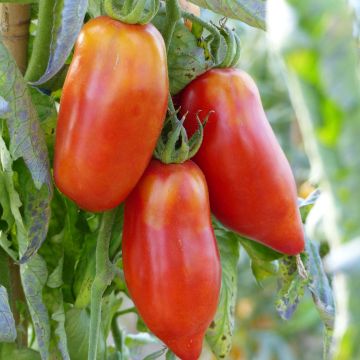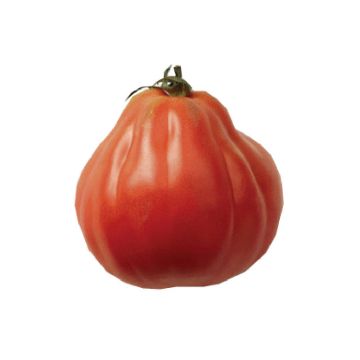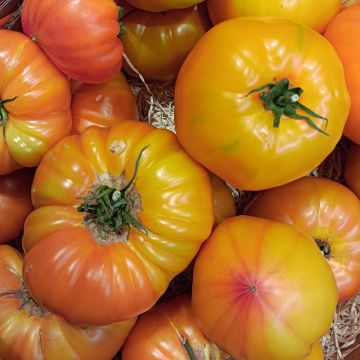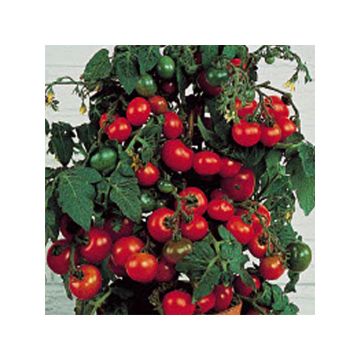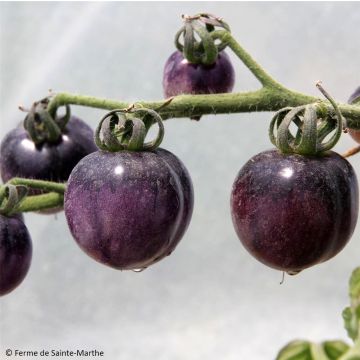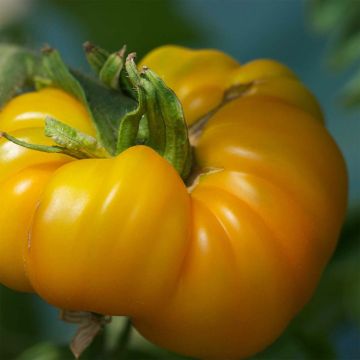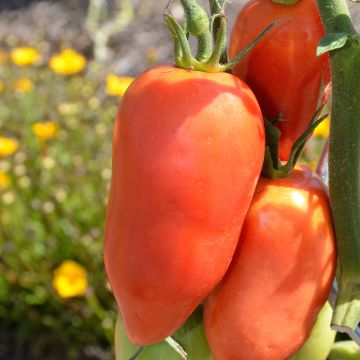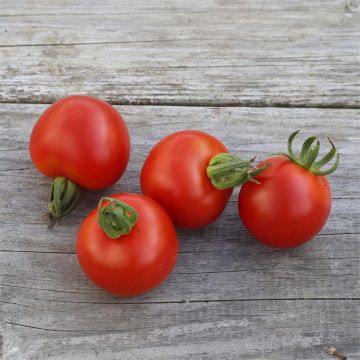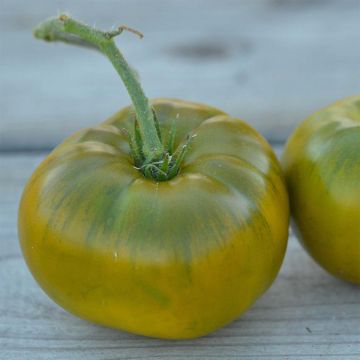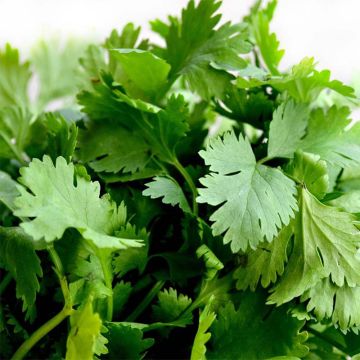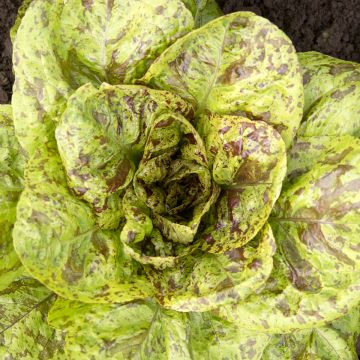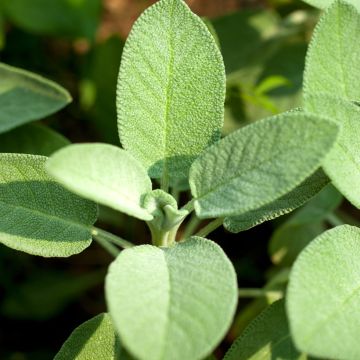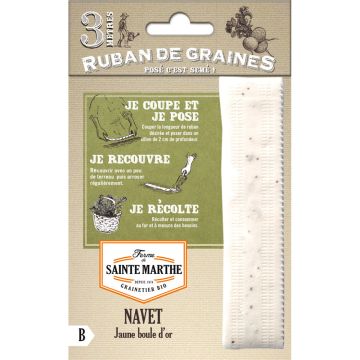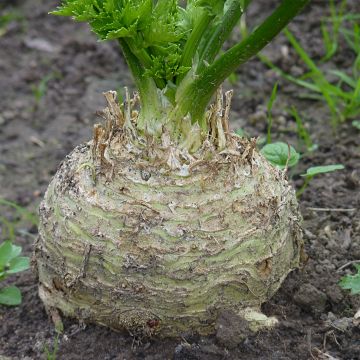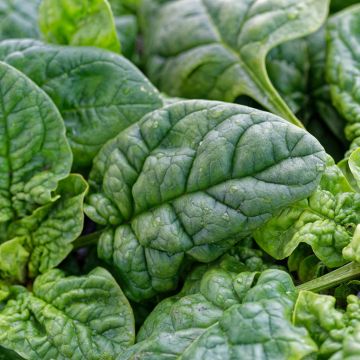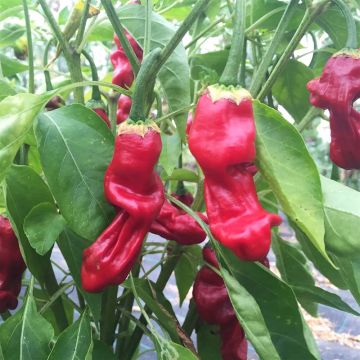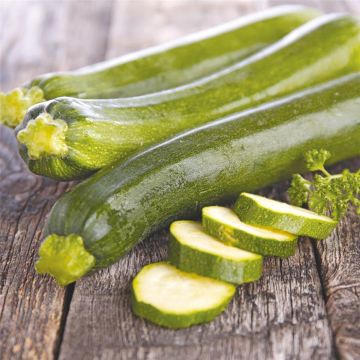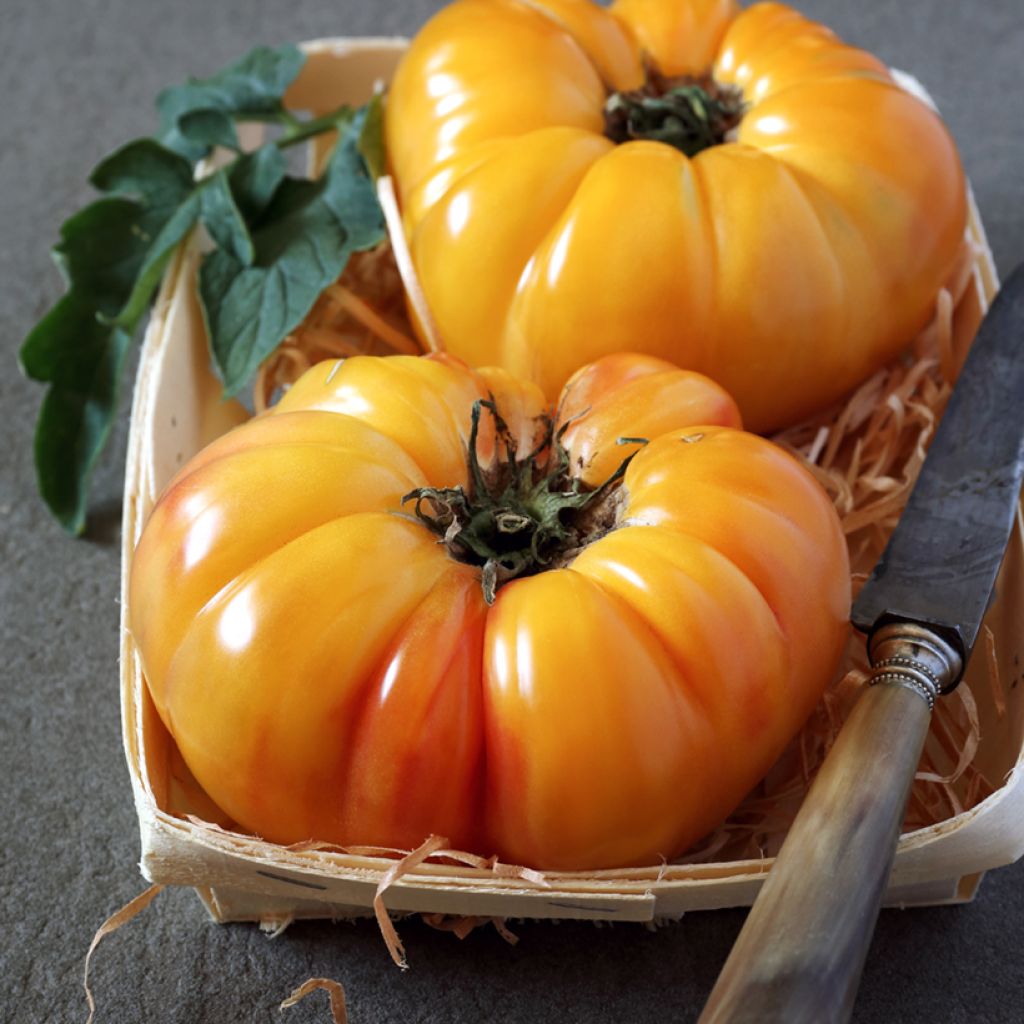

Tomato Pineapple organic seeds
Tomato Pineapple organic seeds
Solanum lycopersicum Ananas
Tomato
This item cannot be shipped to the selected country
Delivery charge from €6.90
More information
Delivery charge from €6.90
More information
Schedule delivery date,
and select date in basket
This plant carries a 6 months recovery warranty
More information
We guarantee the quality of our plants for a full growing cycle, and will replace at our expense any plant that fails to recover under normal climatic and planting conditions.
From €7.90 for pickup delivery and €6.90 for home delivery
Express home delivery from €8.90.
Description
The 'Pineapple' tomato is an old, late-ripening variety, renowned for its large, flattened fruits of yellow orange marbled with red, weighing between 250 and 400 g. Fleshy, juicy, and almost seedless, this tomato is excellent in salads. Its sweet and slightly sugary taste is very appealing to children, just like its pineapple slice appearance. Very productive at the end of summer, this vigorous tomato is sown in March-April and harvested about 4 to 5 months later. A variety that is both tasty and attractive.
The tomato originates from South and Central America, where it was cultivated by the Incas before the arrival of the Conquistadors. The term "tomato" comes from the Inca word tomatl, referring to both the plant and its fruit. This solanaceous plant comes in a multitude of varieties of all sizes, shapes, and colours. Ancient varieties, with indeterminate growth, can live for two years, while recent determinate growth varieties form bushes without requiring staking.
The tomato plant is a perennial herbaceous plant in tropical climates, grown as an annual in our latitudes. It produces small yellow flowers in cymes, which turn into colourful fruits, bringing beauty to the vegetable garden and nutritional benefits. Low in calories and rich in water, the tomato is especially valued for its lycopene, a powerful antioxidant released during cooking, as well as for its content of vitamin C, provitamin A, and trace elements.
For the gardener, the tomato is an essential summer vegetable. The choice of varieties will depend on their use: salads, sauces, raw or cooked consumption. The region's sunlight should also be taken into account. Although tomatoes require plenty of sun and heat, they can be grown in containers on a balcony, especially small-fruited varieties. However, be careful: immature fruits, stems, and leaves contain solanine, a toxic substance not to be consumed.
Harvesting varies depending on the varieties, from early to late, with a delay of 50 to 100 days after transplanting. A ripe tomato is recognised by its uniform colour and the slight softness of its flesh. For better storage, pick it with its stalk.
Storage depends on the fruits' water content. They can be kept for a few days in the refrigerator or at room temperature. For longer preservation, opt for methods such as preserves, sun-dried tomatoes, sauces, freezing, preserves, or juice.
The gardener's tip: grow several varieties each year to reduce the risk of crop loss in case of climatic events or diseases. To prevent tomato blossom end rot, which is a calcium deficiency, spray a comfrey maceration on your plants. When transplanting, bury the stem up to the first leaves to strengthen the root system, ensuring a good harvest. Finally, remember that tomatoes and basil make an excellent combination in the garden, as well as in the kitchen!
Harvest
Plant habit
Foliage
Botanical data
Solanum
lycopersicum
Ananas
Solanaceae
Tomato
Cultivar or hybrid
Annual
Other Tomato seeds
View all →Planting and care
Soil preparation: Tomato plants are extremely easy to grow. Sunlight and warmth play a crucial role in their success. They can thrive in any type of soil, although they prefer rich and well-draining soil. The substrate can be enriched with a bit of sand if it is too compact.
Sowing under glass: From mid-February to May, sow indoors or in heated greenhouses in trays at around 20°C. Bury the seeds under 5 to 7 mm of seed compost, as they need darkness to germinate. Do not use fertiliser at this initial stage, as you may risk burning the future roots. Tomato plant growth is very fast: tomato seeds usually germinate within two weeks. Do not discard a tray if germination has not occurred within this timeframe, as some varieties are slow to sprout. When the plants have reached about fifteen cm, consider transplanting them.
Transplanting into open ground: Once all risk of frost has passed, usually after mid-May, transplant your plants into open ground. Choose the sunniest and warmest spots in the garden. The base of a wall facing due south is an ideal position. Loosen the soil and dig a hole at least 3 to 4 times the volume of the root system of your plant. Add some well-decomposed compost at the bottom. Place your plant, which can be buried up to the first leaves, then backfill. Firm the soil, create a basin around the plant, then water generously. Be careful not to wet the leaves to protect your plants from fungal diseases.
Maintenance: Applying mulch at the base of your plants helps maintain some moisture and reduces the need for weeding. Tomato plants do not require a lot of watering, as their root system delves deep to find available resources. Water generously only in case of prolonged drought.
Seedlings
Care
Intended location
This item has not been reviewed yet - be the first to leave a review about it.
Similar products
Haven't found what you were looking for?
Hardiness is the lowest winter temperature a plant can endure without suffering serious damage or even dying. However, hardiness is affected by location (a sheltered area, such as a patio), protection (winter cover) and soil type (hardiness is improved by well-drained soil).

Photo Sharing Terms & Conditions
In order to encourage gardeners to interact and share their experiences, Promesse de fleurs offers various media enabling content to be uploaded onto its Site - in particular via the ‘Photo sharing’ module.
The User agrees to refrain from:
- Posting any content that is illegal, prejudicial, insulting, racist, inciteful to hatred, revisionist, contrary to public decency, that infringes on privacy or on the privacy rights of third parties, in particular the publicity rights of persons and goods, intellectual property rights, or the right to privacy.
- Submitting content on behalf of a third party;
- Impersonate the identity of a third party and/or publish any personal information about a third party;
In general, the User undertakes to refrain from any unethical behaviour.
All Content (in particular text, comments, files, images, photos, videos, creative works, etc.), which may be subject to property or intellectual property rights, image or other private rights, shall remain the property of the User, subject to the limited rights granted by the terms of the licence granted by Promesse de fleurs as stated below. Users are at liberty to publish or not to publish such Content on the Site, notably via the ‘Photo Sharing’ facility, and accept that this Content shall be made public and freely accessible, notably on the Internet.
Users further acknowledge, undertake to have ,and guarantee that they hold all necessary rights and permissions to publish such material on the Site, in particular with regard to the legislation in force pertaining to any privacy, property, intellectual property, image, or contractual rights, or rights of any other nature. By publishing such Content on the Site, Users acknowledge accepting full liability as publishers of the Content within the meaning of the law, and grant Promesse de fleurs, free of charge, an inclusive, worldwide licence for the said Content for the entire duration of its publication, including all reproduction, representation, up/downloading, displaying, performing, transmission, and storage rights.
Users also grant permission for their name to be linked to the Content and accept that this link may not always be made available.
By engaging in posting material, Users consent to their Content becoming automatically accessible on the Internet, in particular on other sites and/or blogs and/or web pages of the Promesse de fleurs site, including in particular social pages and the Promesse de fleurs catalogue.
Users may secure the removal of entrusted content free of charge by issuing a simple request via our contact form.

































